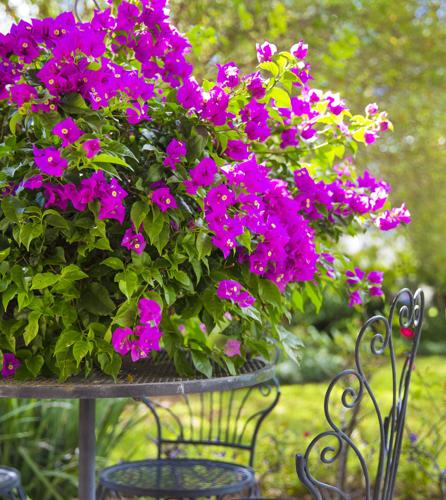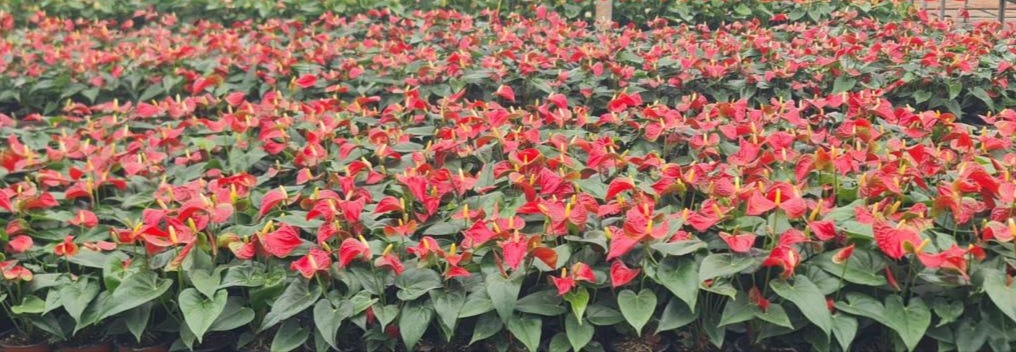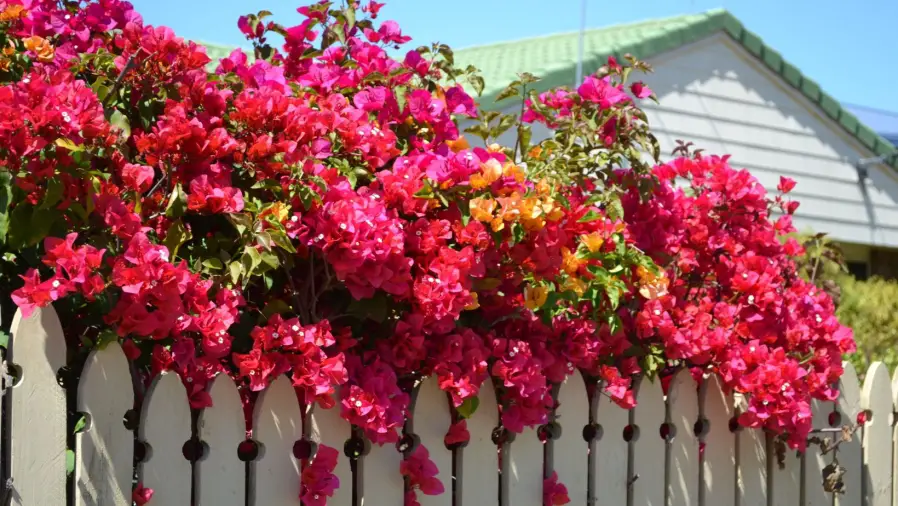The best time to plant bougainvillea is during the spring or summer. These seasons provide optimal conditions for root establishment and growth.
Bougainvillea thrives when the weather begins to warm, making the transition from late spring to early summer an ideal planting window. Gardeners in temperate zones take advantage of this period to ensure that bougainvillea plants develop a strong root system before cooler weather sets in.
These vibrant, climbing plants prefer sunny locations and require adequate drainage to flourish. Planting them in this timeframe allows for a burst of color and vitality in gardens and landscapes. Careful timing in planting bougainvillea can result in lush foliage and an impressive display of flowers, maximizing their potential as a stunning addition to any outdoor space.

Credit: www.nola.com
Introduction To Bougainvillea Planting
The vibrant cascades of color that characterize bougainvillea plants are not only a visual delight but also a testament to their adaptability in warm climates. An iconic plant known for its dazzling bracts and lush green foliage, bougainvillea serves as both an enchanting standalone feature and a mesmerizing complement to any garden ensemble. Planning the best time to plant bougainvillea is crucial for ensuring a breathtaking display of its full potential.
Understanding Bougainvillea Varieties
Selecting the right variety of bougainvillea is key to aligning your garden’s aesthetic and climate with the plant’s needs. Bougainvilleas come in several varieties, each with unique characteristics such as growth habit, color, and size:
- Bougainvillea glabra – Often known for its smoother leaves and thorny branches.
- Bougainvillea spectabilis – Recognized by its larger leaves and bracts, and hearty thorns.
- Bougainvillea peruviana – Renowned for its smaller but more vibrant bracts and higher tolerance to dry conditions.
- Bougainvillea x buttiana – A hybrid known for its striking, color-rich bracts and versatility.
Depending on your region and gardening goals, one variety might suit your needs better than others. Optimal planting times may vary slightly between these types, but late winter to early spring is generally ideal, as the risk of frost has passed and warmer temperatures stimulate growth.
Benefits Of Growing Bougainvillea In Your Garden
Embracing bougainvillea in your garden comes with a myriad of benefits:
- Dramatic Color: Bougainvillea’s vibrant bracts add a splash of color to any landscape.
- Versatility: Whether grown as a shrub, ground cover, or trained along a trellis, bougainvillea shapes itself to your design preference.
- Drought Tolerance: Once established, bougainvillea plants are quite hardy and can withstand periods without water.
- Privacy and Security: The plant’s thorny branches can deter unwanted visitors and create a natural barrier when grown along fences.
Gardeners treasure bougainvillea for its low maintenance needs and long blooming season, offering a riot of color through much of the year. With proper planting and care, these plants reward gardeners with a spectacular show that truly makes the effort worth it.
Optimal Planting Time For Bougainvillea
Bougainvillea, a vibrant and lush vine known for its breathtaking florals, thrives when planted at the right time. The timing is crucial to ensure a robust establishment and a cascade of color in your garden. This section will discuss the ideal planting periods, taking into account seasonal influences and regional climates specific to Texas, California, and Arizona. Additionally, we will explore the nuances of planting Bougainvillea in pots versus in-ground, ensuring that your plants get the best start possible.
Ideal Seasons For Planting Bougainvillea
Bougainvillea plants prefer the warmth of spring and early summer for planting. The warm temperatures and longer daylight hours during these seasons offer the perfect conditions for root establishment and growth. It’s essential to plant Bougainvillea after the threat of frost has passed, and steady warm weather sets in. In general, planting between March and June, depending on your local climate, will give your Bougainvillea the best chance to thrive.
Regional Considerations: Texas, California, And Arizona
Each region has unique climatic conditions that influence the optimal planting times for Bougainvillea. Let’s break it down:
- Texas: The best time to plant Bougainvillea in Texas is typically in late spring, as the weather begins to warm. However, areas that experience milder winters may allow for earlier planting.
- California: With its generally mild climate, California gardeners can plant Bougainvillea in either spring or fall. Coastal areas enjoy a more extensive planting window due to fewer temperature extremes.
- Arizona: Given its desert climate, planting in Arizona should occur during the early spring months or late fall to avoid extreme summer heat that can stress young plants.
Planting Bougainvillea In Pots Vs. In The Ground
Whether to plant Bougainvillea in pots or directly in the ground depends on several factors, including climate, space, and personal preference.
| Planting Method | Advantages | Considerations |
|---|---|---|
| In Pots | Portability, better control over soil quality, and drainage; ideal for colder regions as plants can be moved indoors. | May need more frequent watering and fertilizing; choose pots that provide adequate space for root growth to ensure the plant’s health. |
| In the Ground | Natural insulation from the soil, requires less frequent watering; better integration into garden landscapes. | May need winter protection in colder regions; requires well-draining soil to prevent root rot. |
In summary, planting Bougainvillea at the correct time of year and in the appropriate manner can greatly influence the health and beauty of your plants. Tailoring your approach to your specific regional conditions and considering the advantages of pot versus ground planting will maximize bloom potential and overall plant vitality.
Cultivation Tips For Bougainvillea Success
When it comes to infusing your garden with vibrant colors, few plants can rival the exuberant beauty of bougainvillea. These lush climbers are beloved for their showy flowers and hardy nature, flourishing with the right mix of care and conditions. Let’s delve into the cultivation tips for bougainvillea success, ensuring your garden is awash with their spectacular hues season after season.
Soil Preparation & Drainage Essentials
To set the foundation for thriving bougainvillea, start with soil preparation and drainage. Proper drainage is crucial, as waterlogged roots can lead to root rot. Opt for well-draining soil and consider raising planting beds or using containers if your soil is heavy or clay-like. Amending the soil with organic matter can improve nutrient content and drainage capabilities.
- Choose well-draining soil or amend with perlite or gravel.
- Ensure pots have adequate drainage holes if growing bougainvillea in containers.
- Consider raised beds to enhance drainage in heavy soils.
Sunlight And Location Requirements
Bougainvillea thrives in locations blessed with ample sunlight. These plants require at least 6 hours of direct sunlight per day to produce their best blooms. Choose a sunny spot, preferably against a south-facing wall or fence for added warmth and protection.
- Select a spot that receives full sun for most of the day.
- Use reflective surfaces to enhance light exposure if needed.
- Avoid shaded areas that can impede flowering.
Watering Protocols To Prevent Overwatering
While bougainvillea is drought-tolerant, careful watering is key to prevent overwatering. Allow the soil to dry slightly between watering; a deep, infrequent watering approach promotes a robust root system. Be particularly cautious with potted bougainvillea, where overwatering is more common and can be detrimental to plant health.
- Water deeply, then wait for the top inch of soil to dry out before watering again.
- Reduce watering frequency during cooler months.
- Ensure pots have proper drainage to avoid standing water.
Fertilizer Use For Healthy Growth
For optimal growth, feeding your bougainvillea is essential. Utilize a high-phosphorus fertilizer during the growing season to encourage blooming and healthy development. Be judicious with feeding, as too much can promote foliage at the expense of flowers.
| Time of Year | Fertilizer Type | Frequency |
|---|---|---|
| Spring | High-phosphorus | Every 4-6 weeks |
| Summer | High-phosphorus | Every 4-6 weeks |
| Fall/Winter | Reduce or stop fertilizing | N/A |
Pruning Methods For Optimal Flowering
Pruning not only shapes your bougainvillea but also encourages prolific flowering. Regular pruning after each bloom cycle stimulates new growth where flowers appear. Time pruning to avoid cutting off new buds, ensuring a bounty of blossoms.
- Prune after flowering, typically in late winter or early spring.
- Remove any dead wood and crowded branches to maintain plant health and shape.
- Pinch tips periodically to encourage bushiness.
Understanding Bougainvillea’s Life Cycle And Blooming
Understanding the life cycle of bougainvillea plays a critical role in its care. These plants typically have a blooming period followed by rest. Bougainvillea flowers on new growth, so facilitating this cycle through proper pruning, watering, and fertilizing is central to achieving a garden alive with color.
- Expect blooms from early summer through fall, with proper care.
- Reduce watering and fertilizing in winter as the plant enters a rest period.
- Remember, blooming is most prolific on new, mature growth.

Credit: www.myneworleans.com
Troubleshooting Common Bougainvillea Issues
Bougainvillea, with their vibrant hues and lush growth, are a sight to behold but can sometimes perplex gardeners when they run into issues. Whether it’s a lack of blossoms or an unexpected pest invasion, these issues can put a damper on the visual splendor of these plants. In this section, we’ll tackle some of the most common bougainvillea challenges and provide guidance to ensure your plant thrives.
Managing Pests And Disease In Bougainvillea
Bougainvilleas can fall prey to pests such as aphids, spider mites, and caterpillars. Diseases like root rot and fungal infections can also occur. The key to managing these issues is early detection and treatment. Regularly inspect your plants for signs of distress, such as discoloration, wilting, and leaf drop.
- For aphids and mites, use a strong water jet or introduce natural predators like ladybugs. In severe cases, apply horticultural oils or insecticidal soaps.
- Prune affected areas to control the spread of disease and improve air circulation.
- Ensure adequate drainage to prevent root rot, and avoid overwatering to discourage fungal growth.
Addressing Poor Flowering Or Color Display
A common concern with bougainvillea is when they produce few or no flowers. Often, this can be due to excessive nitrogen, lack of sunlight, or improper pruning. To enhance flowering:
- Position your bougainvillea in a location where it will receive full sun for most of the day.
- Minimize nitrogen-rich fertilizers, which promote leaf growth at the expense of blooms.
- Prune at the correct time—after a bloom cycle—to encourage new growth and flowering.
Fertilize with a formulation high in phosphorus to promote vibrant flowers. Be patient, as bougainvilleas have a unique flowering cycle and may burst into color when the conditions are right.
Transplanting And Root Care For Established Plants
Transplanting established bougainvillea plants requires careful handling to prevent shock and root damage. If a plant becomes root-bound or is outgrowing its current space, consider repotting or transplanting to a larger area.
Follow these steps:
- Water the plant well before attempting to move it, as this helps reduce stress.
- Carefully remove the plant from its current container to maintain the root ball’s integrity.
- Place the plant in a new pot or location that is only slightly larger to encourage blooming.
- Ensure the planting soil is well-aerated and well-draining to prevent root diseases.
Bougainvilleas prefer to be slightly root-bound, so avoid overly large pots. Monitor your plant after transplanting and provide stable conditions to help it establish.
Advanced Bougainvillea Care Techniques
Mastering the art of Advanced Bougainvillea Care Techniques ensures your vibrant flowering vines thrive throughout the season. Tailoring your approach to the specific needs of Bougainvillea can yield stunning blooms and lush foliage. Let’s dive into the advanced methods for optimizing soil, fertilizing effectively, and adjusting care with the changing seasons.
Customizing Soil Blends For Bougainvillea
Bougainvillea prospers in well-draining soil that can support its rapid growth. Creating a custom soil mix enhances drainage while providing necessary nutrients. Combine two parts soil, one part perlite, and one part compost for a blend that promotes robust root health.
- Two parts potting soil – Acts as the foundational medium
- One part perlite – Enhances aeration and drainage
- One part compost – Infuses organic nutrients
Crafting The Right Fertilizer Schedule
Proper nutrition is essential for bright and bountiful Bougainvillea blooms. A strategic fertilizer schedule during the growing season encourages flowering. Opt for a high-phosphorus blend to boost blooms, applying it every four to six weeks in the spring and summer.
| Month | Fertilizer Type | Application Frequency |
|---|---|---|
| March – August | High-phosphorus fertilizer | Every 4-6 weeks |
| September – February | Minimal or none | – |
Seasonal Adjustments In Bougainvillea Care
As seasons shift, so too should your Bougainvillea care routine. Monitor temperature fluctuations closely, especially during the cool months. Ensure your Bougainvillea is shielded from frost which can damage delicate foliage and flowers. In hotter months, increase watering to combat the intense heat and maintain vibrant growth.
- Protect from frost during winter months
- Increase watering frequency during hot seasons
- Prune after the blooming cycle to encourage new growth
Final Thoughts On Bougainvillea Planting
As we come to the end of our vibrant journey through the colorful world of bougainvillea planting, we reflect on the horticultural practices that can help these hardy yet enchanting plants thrive. Knowing when and how to plant bougainvillea is key to maximizing their blooming potential and ensuring their health for years to come.
Recap Of Best Practices For Bougainvillea Planting
- Timing: Spring or early autumn is ideal, avoiding the harshness of winter frost and extreme summer heat.
- Location: Choose a sunny spot with well-drained soil.
- Soil Preparation: Amend with organic matter to enhance drainage and nutrient content.
- Watering: Keep consistently moist after planting, then reduce to minimal once established.
- Pruning: Prune after the blooming cycle to maintain shape and encourage further flowering.
- Fertilizing: A balanced, slow-release fertilizer will promote vibrant blooms.
Continued Education And Resources
Gardeners passionate about these floral wonders are encouraged to dive deeper into the world of bougainvillea care. Various resources such as gardening books, online forums, and local gardening clubs offer a treasury of knowledge. Learning from experienced gardeners and horticulturists can provide invaluable insights into tailor-made care for your specific climate and environment.
Joining social media groups dedicated to bougainvillea enthusiasts or subscribing to channels offering gardening tips can be a great way to stay informed. Virtual workshops or local extension services may also have programs focusing on bougainvillea care, offering up-to-date information and advanced techniques for gardening aficionados.
In essence, while the initial planting period is crucial, the ongoing education and accumulation of resources will ensure that your bougainvillea continues to captivate with its abundant beauty. Keep your curiosity in bloom and your green thumb ever-ready for the delightful challenges and rewards that come with nurturing these magnificent plants.

Credit: medium.com
Frequently Asked Questions For Best Time To Plant Bougainvillea
Is Bougainvillea Better In Pots Or Ground?
Bougainvillea thrives in pots as root confinement can promote more abundant blooming.
What Is The Secret To Growing Bougainvillea?
The secret to growing bougainvillea involves full sun exposure, well-drained soil, minimal watering, regular pruning, and occasional fertilization for vibrant blooms.
Do Bougainvillea Like Sun Or Shade?
Bougainvilleas thrive in full sun and do not fare well in dense shade. They require ample sunlight to bloom vibrantly.
Do Bougainvillea Come Back Every Year?
Yes, bougainvillea comes back every year as they are perennial plants in suitable climates.
Conclusion
Planting bougainvillea at the optimal time can truly enhance your garden’s vibrancy. Spring or early summer sets the stage for robust growth. This timing allows roots to establish before cooler weather. Remember, full sun and good drainage are key. Embrace this season to infuse your space with their dazzling colors.
Happy gardening!
(To learn more about Bougainvillea Plantation Tips : https://bonsainurserybd.com/bougainvillea-plant-how-to-care-for-your-bougainvillea-plant-tips-and-tricks/)
